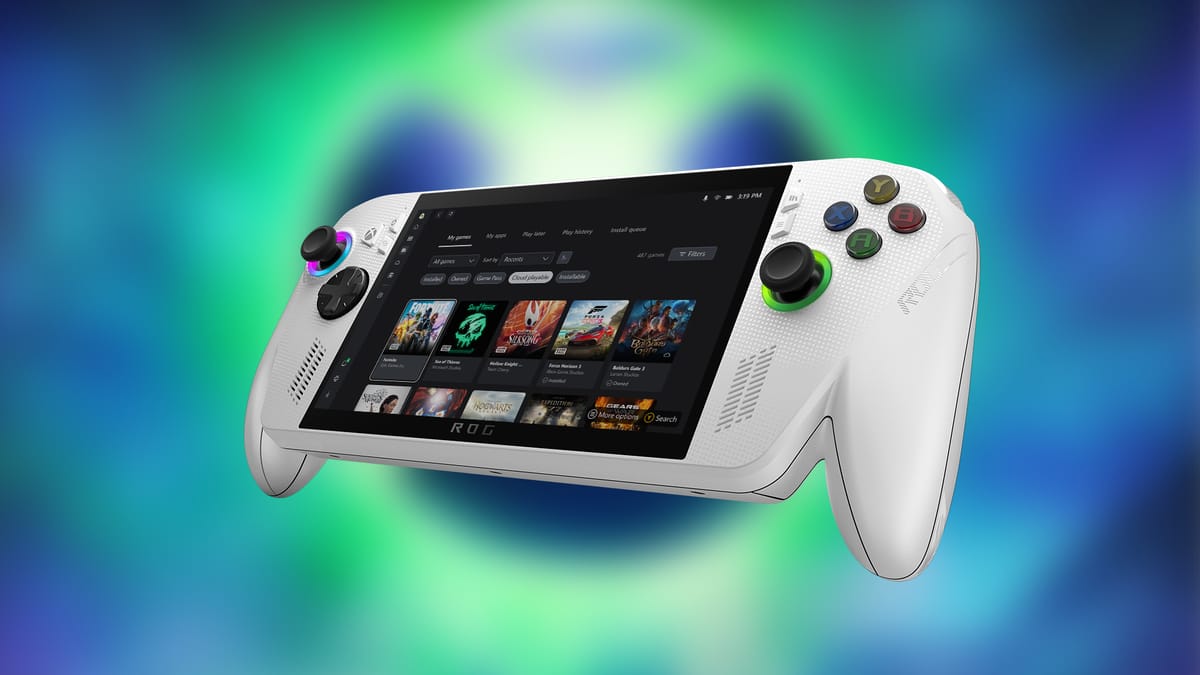
The new Xbox ROG Ally pair—the Xbox Ally and Xbox Ally X—are both 11.42 inches long, while Asus’s ROG Ally X and the plain ROG Ally each measure 11.02 inches. All models feature a glossy 7-inch 1080p 120Hz screen and operate with Windows 11 Home. Button layouts are identical, with Hall effect triggers and an A, B, X, Y setup, though the Xbox ROG models include an extra Xbox button. And they all have the same card reader.
We're likely asking the same question: Why create another device that’s nearly identical and pricier? The core difference is that the Xbox ROG Ally models come with a more powerful CPU, more or equal RAM, and an additional USB-C port. But the prices, especially the Xbox ROG Ally, create confusion around who these devices are for. Xbox is more synonymous with consoles, but both are pricier than the Series X and aren't as easy to use. And why pay either price when you could invest in a laptop that's more powerful?
These questions suggest these models are absolutely niche products and are ultimately more about the collaboration between Asus and Xbox. But looking at the hardware in a vacuum, the improvements make either Xbox ROG excellent for first-time handheld PC buyers, but not worthwhile upgrades if you own any PC handheld already.
I reviewed the more affordable and less powerful Xbox ROG Ally (not the Ally X), and let me tell you, I haven’t had this much fun using handheld hardware since the Game Boy Advance or the Nintendo Switch. It’s the best handheld I’ve ever held, and for what is essentially a budget PC, it’s snappy and can play AAA games, even though it requires a steep sacrifice in quality. But Cloud Gaming and remote play offer shockingly impressive solutions for playing big budget games.
Hardware
Too many handhelds don't have proper grips, and I've learned to deal with it. But after holding the Xbox ROG Ally, this Asus and Xbox collaboration is successful just because of the grips. I know the Steam Deck has a version of grips, but the way the grips allow my pinkies to rest makes the Xbox Ally melt into my hands like a Series X, Dual Sense, or Switch Pro controller. All handhelds moving forward should have fanged grips.
The body is a curvier ROG Ally with Xbox-inspired parts. The operative word is inspired. Thumbsticks, shoulder buttons, and triggers look like Xbox parts, but don't feel as durable as an Xbox Series controller. The sticks and triggers feel flimsy, and only the triggers include Hall effects, and Asus doesn't sell replacement sticks should stick drift occur. Keeping the price down in this way is a disappointing trade-off.
All the buttons feel mushier. The shoulder buttons, in particular, feel like I might permanently smash them in from natural use. I can’t imagine these parts surviving a year’s worth of Call of Duty play. I know most aren’t playing Call of Duty on an Ally, but some indie games require intense finger mechanics, and I’m not confident these buttons will endure.
The Xbox button opens a group of tabs similar in function to the Series X menu. Jump to your friend’s list, performance tracking, gameplay capture, and the new Gaming Copilot. A quick note on Gaming Copilot: I’m not that critical of it. I quizzed it on gameplay from Ball X Pit I already succeeded at, as well as best builds, and it gave useful answers. The issue is that it’s untrustworthy, so I might as well look it up myself. And the voices are fine, but saying “So, Anthony, here’s the lowdown...” sounds like a parent trying to use a teen’s lingo. I’d rather have Anna from Forza Horizon 5. At least it’s not pretending.
While tapping around the menu screens using the 7-inch glossy LED display, the beautiful image is quickly muddied with fingerprint smudges. I’ll wash my hands, and the screen still creates a heatmap of all my taps on the screen. It’s important to keep screen cleaner nearby because it displays a crisp image that keeps detail with low brightness and remains visible outdoors. It doesn’t rival OLED’s clarity and contrast, but it’s pretty.
I’m glad Asus did not disregard the 3.5mm audio jack. Sometimes it’s easier to plug in my studio headphones instead of powering on my Bluetooth headphones, disconnecting them from one device, and connecting them to another. I don’t know if the audio jack gives me the benefits of Dolby Atmos, but the sounds explode, slice, shoot, pop, and boing with clarity, distinction, and recognizable direction.
Shoutout to the onboard speakers. They’re loud without creating distortion, and despite no deep bass frequencies used in AAA games, the mid frequencies are adjusted expertly to guarantee distinction between, say, explosions, gunfire, and footsteps in Battlefield 6.
Software
From a hardware standpoint, the Xbox ROG Ally is unmatched. But its weaknesses are in the software. The small, annoying quirks don’t make games unplayable or make the machine inoperable, but they remind me why PC gaming is annoying.
Xbox wants the Xbox Ally to feel like an Xbox handheld. That means the first app you see after logging in to Windows 11 is the Xbox app in the new full-screen mode, functioning similarly to the PC version, which means it’s just as confusing.
When I click on the Game Pass tab and see “Xbox Game Pass Ultimate, 400+ Games” at the top, I think I’m going to see the catalog of all 400+ games. Instead, I’m shown a screen of all my Game Pass benefits, deals, rewards, and other categories of Game Pass games to check out.
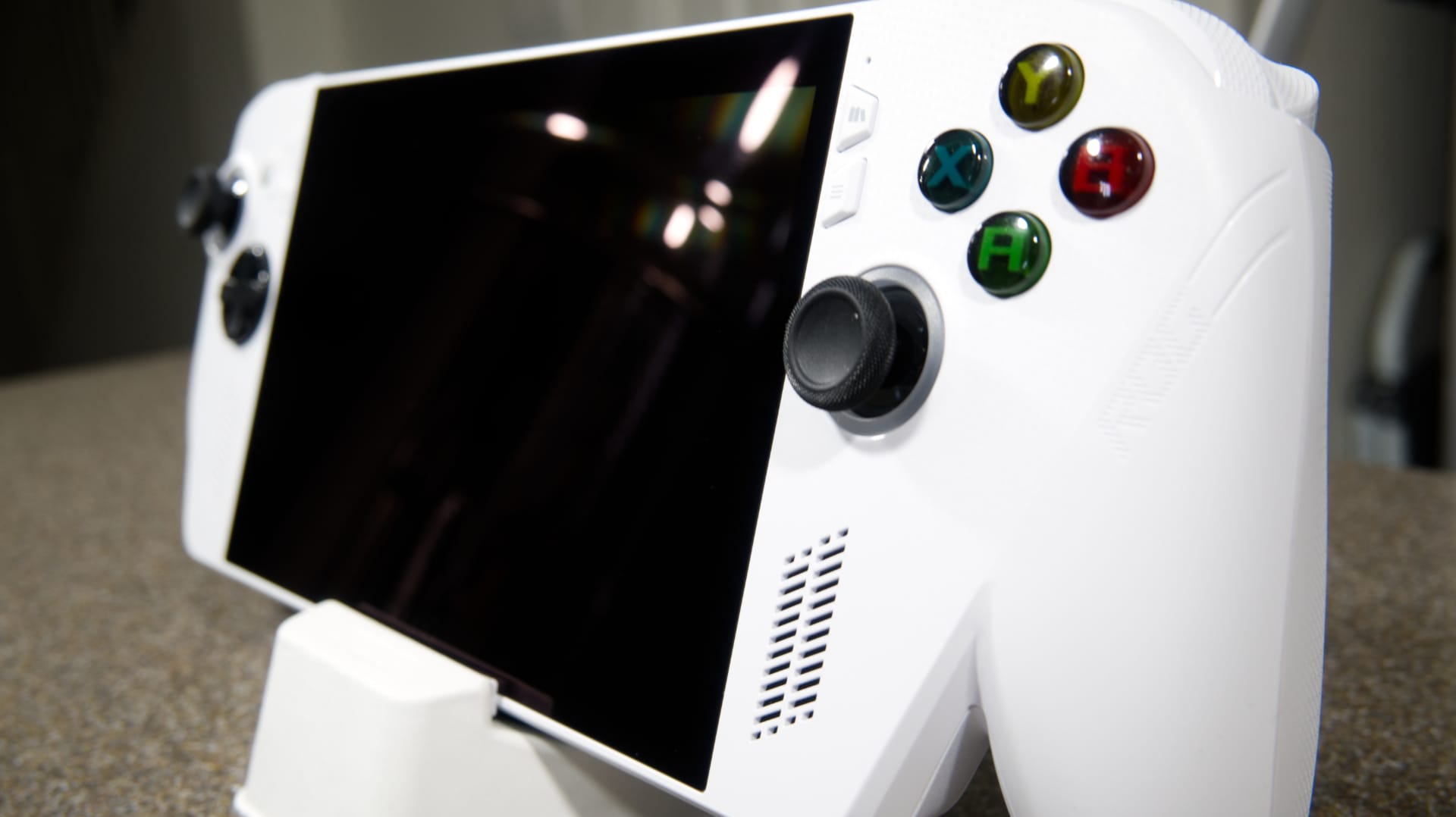
In the My Library tab, it filters, by default, games I installed on my system. But when I tap the Owned filter, it doesn’t show my Installed and Owned games; it shows nothing. That is, until I remove the Installed filter, then I see my owned games. Why can't both be shown? I don’t know.
Sometimes, pressing the Xbox button doesn’t let me navigate with the gamepad, forcing me to use the touchscreen, adding more fingerprints. This problem occurs using other software more often than I would like, and even with Windows. I discovered a reliable glitch where when I powered on and opened the PIN screen too fast, I couldn’t enter the PIN with the gamepad or touchscreen. So I would have to restart the machine.
What’s useful is starting games I downloaded from different apps. I can download Borderlands 4 from Steam, The Division 2 from Ubisoft Connect, and Battlefield 6 from the EA app, and play them without opening each app myself. It’s convenient and saves me trouble, especially when the apps occasionally malfunction because they’re loading on top of each other. The still-in-beta Ubisoft Connect is the worst, but it works once it no longer demands resources.
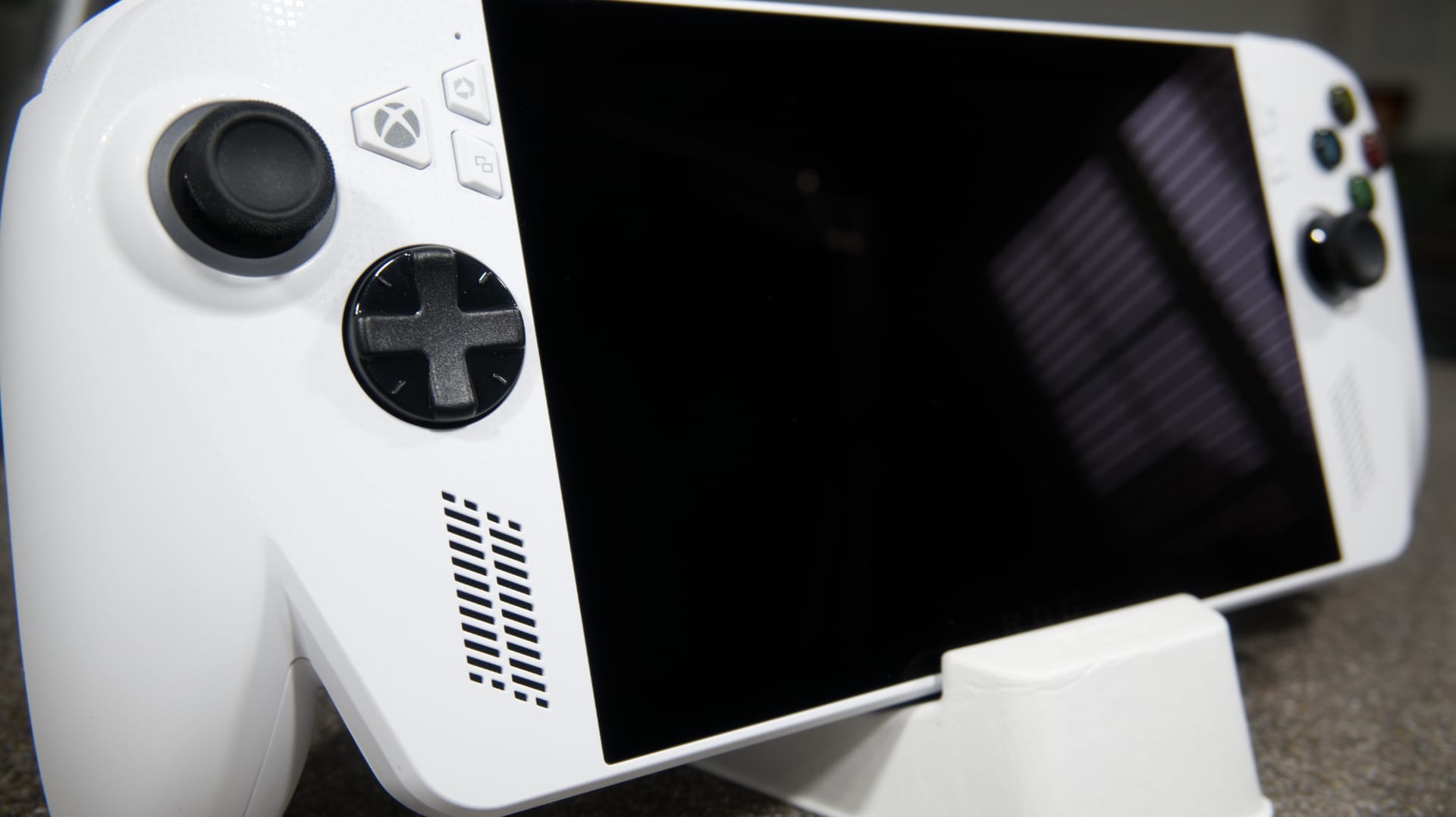
Another finicky app is Asus’ Command Center, which includes quick settings that make changes feel less intimidating, but it has lately started to endlessly “initialize,” preventing me from accessing live performance stats and wattage power adjustments (I could change wattage in Armoury Crate, but I strangely can’t turn on live stats from there). At one time I could, but it just stopped working. When it works, it’s helpful, but it’s often down when I need it.
One quirk I couldn’t stand was changing the Windows screen and sleep settings. I’d set “Turn my screen off after” to Never, but the device sleep would also switch to Never. I’ve never seen laptop or desktop sleep settings do this, and I couldn’t figure out how to fix it.
Games
Just like winning solves problems in sports, playing games solves problems for the Xbox Ally. Once I’m in a game, the Xbox Ally feels rapturous. I forget about those previous annoyances, and the machine doesn’t bring them up most of the time. I first tested Forza Horizon 5. I was shocked to see that the game recommended “High” settings, and I was equally surprised to see how smooth trees and cars blurred by. Even at 30 fps, it felt fast. I think that had a lot to do with the small screen, but I’ll take it.
Trying to run FH5 at 60 fps proved to be too much for the Xbox Ally. I reduced the resolution from 1080p to 720p and decreased other settings, but it couldn’t get there. But it’s one of the rare cases where the trade-offs in framerate performance didn’t matter. It still felt fast and looked good at the recommended settings.
I wanted to try The Division 2, an open-world game I commonly play. But it wouldn’t recognize gamepad controls. The left thumbstick was unresponsive, and the right stick acted like a mouse cursor. I suspect it has to do with Ubisoft Connect since it also had trouble recognizing the gamepad, but I don’t know for sure because The Division worked perfectly. Even a game released in 2016 couldn’t reliably run at 60 fps at 1080p, but it exceeded 60 fps at 720p. Otherwise, it would hover around 40 fps.
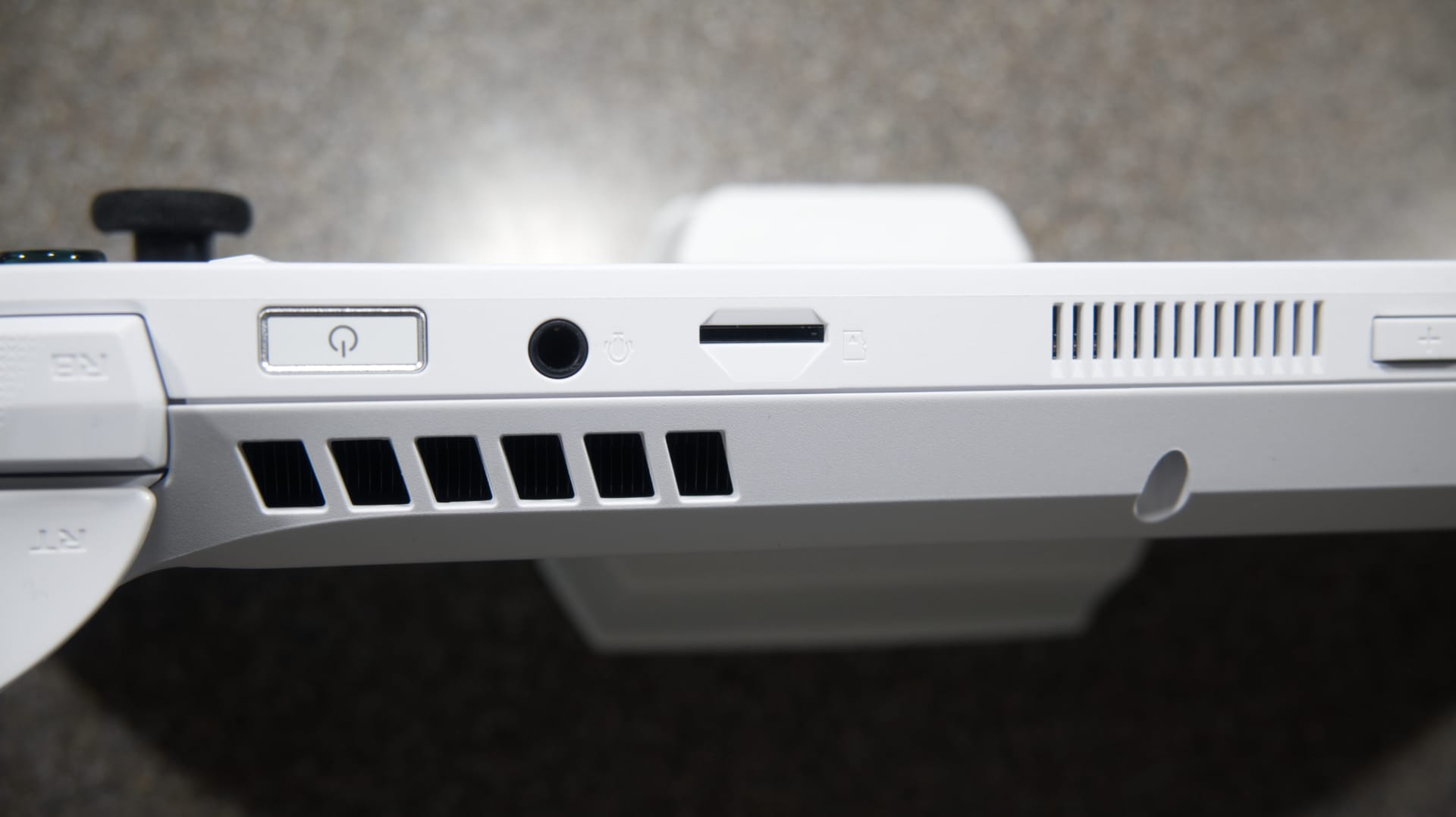
Borderlands 4 was the worst. With all the settings toggled as low as they could go, FSR set to Ultra Performance, and resolution at 720p, all the Xbox Ally could do was average 28 fps. Average. You bet it fluctuated between 22-34 fps. Waiting for shaders to compile took 14 minutes after one of the latest patches, while it would take 5 minutes on my minimum specification desktop. It’s already an unoptimized game, but it’s unplayable on this device.
Square-Enix released an updated version of Final Fantasy XVI for the Xbox Ally handhelds as I reviewed this. Similar to the other AAA games, it’s hard to get reliable performance above 30 fps. I couldn’t get precise data because Command Center stopped working, but frames consistently and noticeably dropped under 30 with all settings on low, despite it looking pretty at 1080p. But even at 720p, it was difficult to maintain a consistent framerate.
Smaller games worked flawlessly. Hollow Knight: Silksong maintained a consistent 120 fps and much higher with uncapped framerate, and zero dropped frames. The newly released Ball X Pit had two frame hitches in a 30-minute session, but ran very smoothly otherwise. Celeste crashed the first time I launched it but ran smoothly after the second launch. The sensitive and mushy D-pad doesn’t do this game any favors, though. Hi-Fi Rush, probably closer to AA game, also ran mostly smoothly, though it had more framerate drops and a couple of sequences where the audio and video desynced during cutscenes.
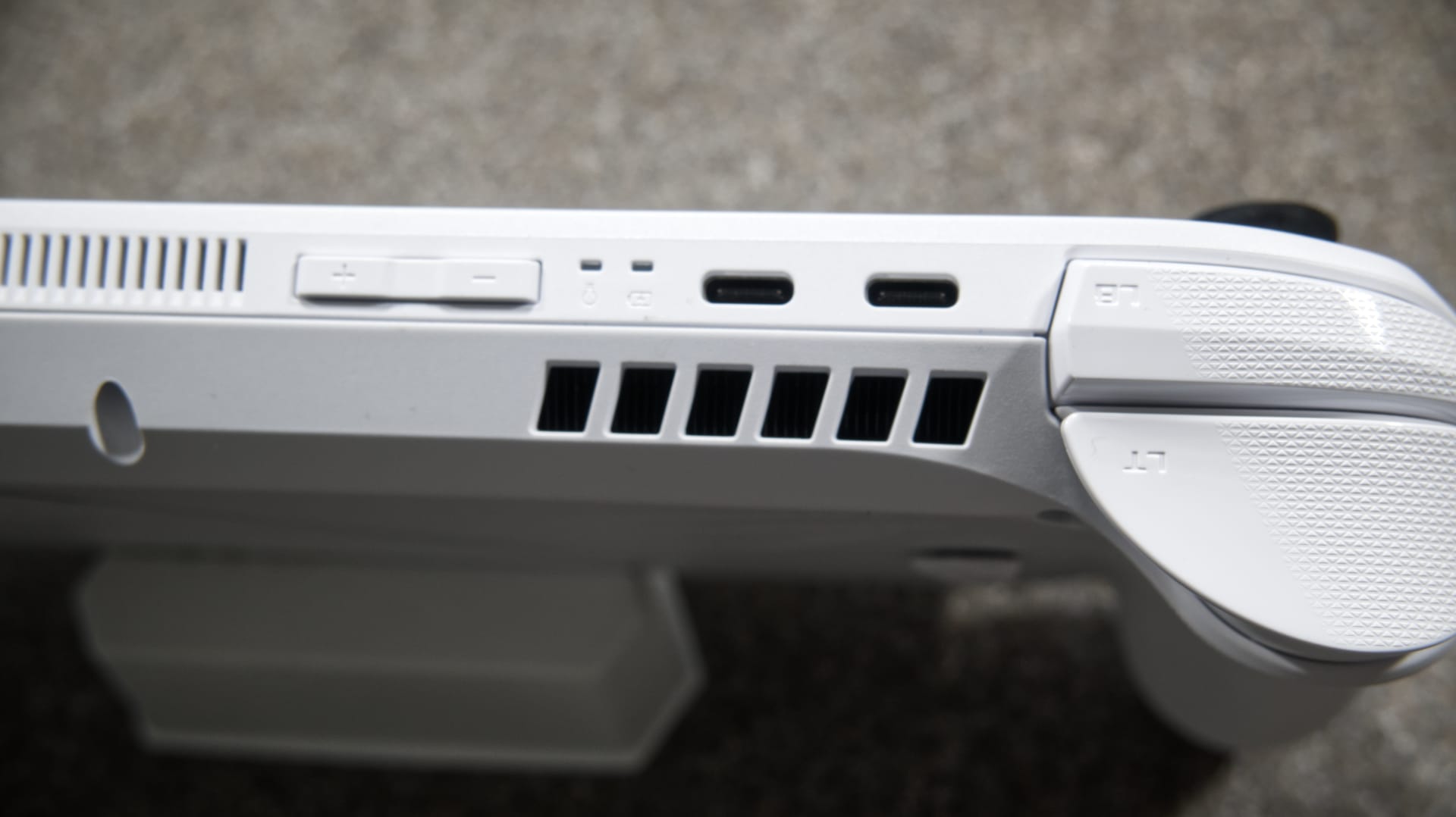
If it wasn’t obvious before, the Xbox ROG Ally is not for AAA gaming. Even games displaying the new Handheld Optimized badge—the sort of Xbox Seal of Quality where you can launch the game and it’s ready to go—are actually saying “Optimized for Xbox ROG Ally X.” You can play AAA games, though you have to make a lot of concessions to do so. But the trade-off in price is worth it. Forza Horizon 5 feels and looks great. I can take games like The Division on the go, and of course, there are so many smaller games that function well.
Keep in mind the 512 GB of storage, too. The Division and The Division 2 took over half the space, and three smaller games left about 100 GB left. When I installed Final Fantasy XVI, I had to delete both Division games. But if I’m using the Xbox Ally as intended, I don’t think it will be too cumbersome.
Streaming & Cloud Gaming
There is one caveat that makes AAA gaming possible, and I am shocked that I can recommend this: Cloud Gaming. I’ve always liked the idea of Xbox Cloud Gaming, but it’s never been an adequate way to play games. That’s changed now. I have no idea how, but Xbox Cloud gaming is the best it’s ever been.
Forza Horizon 5 runs at 60 fps, and I didn’t have any connection hitches or frame rate issues. Input lag was near flawless. The same for Clair Obscur: Expedition 33. Almost imperceptible input lag. The image was slightly blurrier, but it wasn’t hard on my eyes. More importantly, there were no internet pixelation or artifacts that distorted or disrupted the image.
Most of my time playing Ball X Pit has been in the Cloud. I started it in the Cloud and got sucked in and played for over an hour. Only two times did the game slow down from lag, but it was for about three seconds, and there weren’t any issues after that.
Final Fantasy XVI struggled on this hardware, but I didn’t want to stop playing on the Cloud. There was more noticeable input lag, but none that affected combat in a meaningful way. It looked great and maintained a consistent 60 fps.
Cloud gaming isn’t great with just Xbox Cloud, either. I tried Borderlands 4 with Nvidia GeForce NOW. It’s passable performance on my desktop, it’s unplayable on the Xbox Ally, but with GeForce NOW, I didn’t know Borderlands 4 could look as good as it does, and I now know what it feels like to play on an uber powerful machine. All the settings are cranked to max with an unlocked framerate, and it ran perfectly with one instance of buffering that lasted for two seconds.
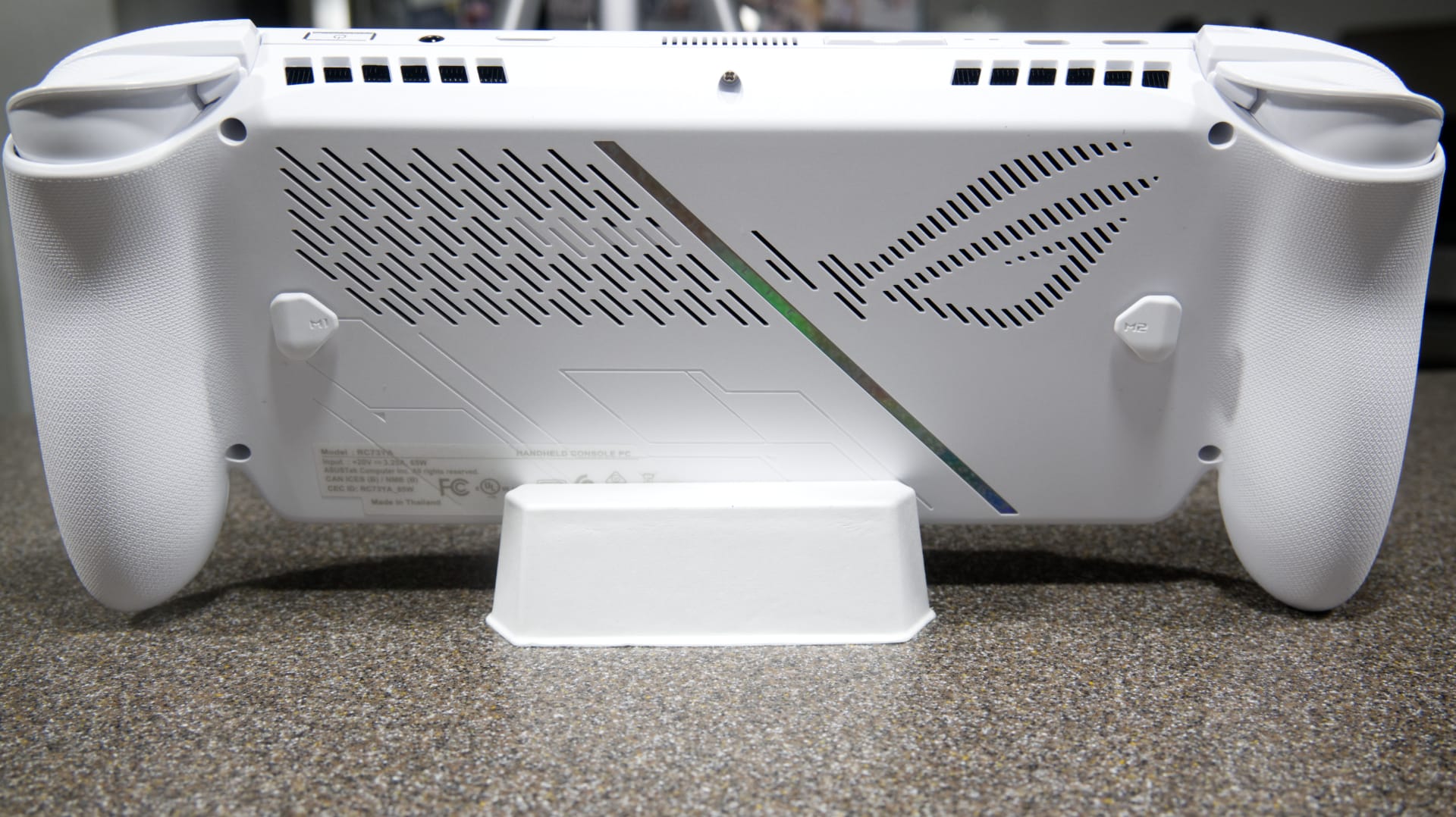
Streaming games feels just as good. Streaming Borderlands 4 through Steam’s remote play function allows me to lie in bed and play it, and it feels like I’m playing it straight off the Xbox Ally.
Xbox’s remote play feature doesn’t work with the Xbox app since it won’t recognize my Series X for some reason, but there is a browser option, so I streamed Battlefield 6 from my Series X, and there were zero issues.
Of course, all of this witchcraft depends on your connection speeds, but if you have the speed, it’s better to play AAA games through the Cloud or stream them rather than download them.
You save battery life with streaming and Cloud gaming, too. I only used 12% of the battery playing Ball X Pit on the Cloud for over an hour. Forza Horizon 5 and The Division used 10-15% in about 20 minutes. Hollow Knight: Silksong was closer to 10-12% in about 25 minutes. It’s good battery life for PC handheld gaming, especially if your charger is nearby.
ROG Xbox Ally
Great
The Xbox ROG Ally isn’t the most powerful piece of hardware, but if the Xbox ROG Ally X is king, then the Xbox ROG Ally is the best affordable option. It can play a lot of games, even though it can’t play AAA games at their peak. That’s clearly not the intention of this model. But combined with excellent streaming and Cloud Gaming options, the Xbox ROG Ally is perfect for those who want to take their small-sized game libraries on the go.
Pros
- Feels great to hold
- Battery life
- Great machine for streaming and Cloud gaming
- Excellent performance from non-AAA games
Cons
- Screen collects smudges easily
- Sticks and buttons feel flimsy and mushy
- Windows and software are finicky
- Handheld Optimized is mostly for Xbox Ally X
This review is based on a retail copy provided by the publisher.
